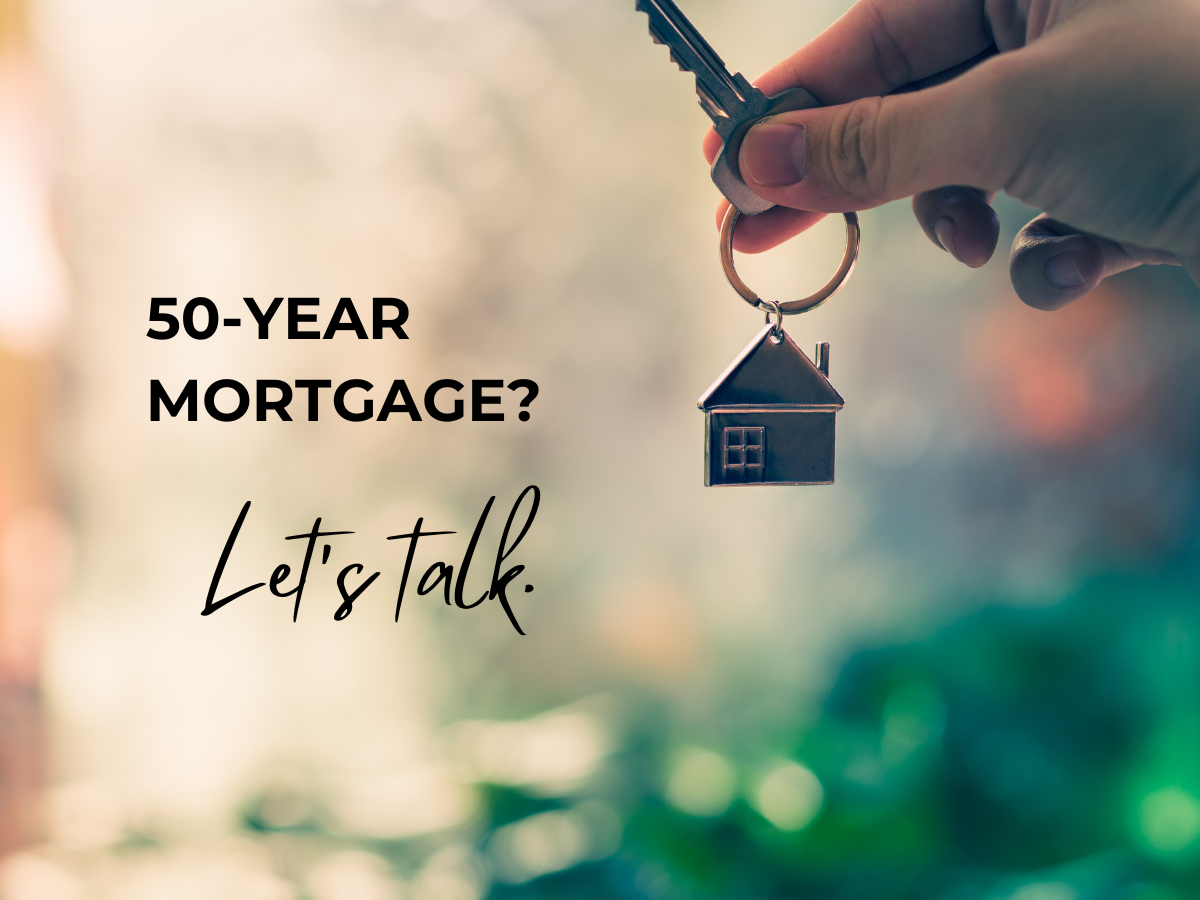If you’ve heard chatter about 50-year mortgages lately and thought, “Wait… isn’t 30 years already my whole life?” — you’re not alone.
Let’s break down what a 50-year mortgage actually is, how it compares to 30- and 40-year loans, and why we’re… let’s say… politely skeptical about the whole thing.
So, what is a 50-year mortgage?
A 50-year mortgage is exactly what it sounds like: a home loan stretched over half a century instead of the classic 30-year term.
Right now in the U.S.:
Standard fixed-rate loans are usually 15 or 30 years, sometimes 20.
40-year loans exist, but they’re niche — often used in loan modifications or non-traditional products.
50-year mortgages are mostly being discussed as a policy idea / potential product, not a mainstream reality… yet. Some policymakers and housing officials have floated them as a way to make monthly payments “more affordable,” especially in high-cost markets.
Translation: this isn’t a normal menu option at most lenders — it’s more like a “what if” the industry is toying with.
The sales pitch: “Smaller monthly payments!”
Here’s why 50-year mortgages are even on the table:
Stretching your loan from 30 to 40 to 50 years shrinks the monthly payment, because you’re spreading the principal over a much longer time.
Very rough example (principal & interest only, just for shape):
$400,000 loan at 6.5%
30-year: around $2,500–$2,550/month
40-year: around $2,400–$2,450/month
50-year: around $2,340–$2,380/month
So going from 30 → 50 years might shave a couple hundred bucks off your monthly payment. That’s the shiny part. That’s the part that gets put on marketing flyers.
But then there’s the fine print.
The not-so-fun part: You’re renting money forever
Lower payment = longer leash. Longer leash = more interest.
Using that same $400K example at 6.5%:
30-year: you might pay something like $500K+ in interest over the life of the loan.
40-year: interest climbs into the $650K+ neighborhood.
50-year: total interest can push toward $800K+ — double the house price in interest alone.
Independent analyses of similar scenarios show the same pattern:
you save maybe $100–$150/month, but pay hundreds of thousands more over the life of the loan.
So yes, the monthly bill feels better. But the lifetime price tag gets ugly, fast.
30 vs 40 vs 50 Years: The vibe check
Think of these like three different financial personalities:
30-Year Mortgage: The Classic
Pros
Widely available, competitive rates.
Decent balance between payment size and total interest.
You build equity at a reasonable pace.
You might actually have your house paid off by retirement.
Cons
Higher payment than a stretched-out term.
Some buyers at the edge of affordability won’t qualify at 30-year payment levels.
Who it fits: Most people. This is the “default” for a reason.
40-Year Mortgage: The Stretch
Pros
Slightly lower monthly payment than 30-year.
Easier to qualify if your debt-to-income ratio is tight.
Not as punishing as 50 years in terms of total interest.
Cons
Still significantly more interest than 30 years.
Slower equity growth.
Less common, fewer programs and protections.
Who it fits: People in high-cost markets who really need slightly lower payments and fully understand they’re paying extra for that flexibility.
50-Year Mortgage: The “I’ll Pay It Off In the Nursing Home” Plan
Pros
Lowest monthly payment of the three.
Makes a “no” sometimes turn into a “yes” on paper for approval.
Short-term breathing room for your monthly budget.
Cons
Massive total interest cost.
You build equity at a snail’s pace — your principal hardly moves for years.
You’ll likely carry a mortgage well into old age unless you refinance or prepay aggressively.
Because it’s non-standard, it may come with higher rates, fewer protections, and more complexity.
Who it fits: Honestly? Only someone with a very specific, disciplined plan to either refinance or aggressively prepay — and who understands they’re using this as a temporary tool, not a “set it and forget it” 50-year relationship.
But wait, isn’t this supposed to “fix” affordability?
Here’s where our skepticism kicks in.
The pitch for 50-year mortgages goes something like:
“Home prices are too high, rates are painful, people can’t qualify — so let’s stretch the loan to make the payment smaller.”
It’s sort of like saying:
“This meal is too expensive… so instead of lowering the price, we’ll let you finance it over three years.”
It doesn’t lower the cost of housing. It just spreads the pain out so it feels less intense month to month, while quietly increasing the total amount you pay.
Most housing economists point out that the real, boring solution is:
Build more homes
Fix zoning and supply constraints
Tackle construction and permitting bottlenecks
50-year mortgages do none of that. They simply help you afford today’s high prices by making future-you pay more.
Why we’re kinda against it (without being dramatic)
We’re not saying a 50-year mortgage is never, ever okay under any circumstances. But as a general “solution” to housing affordability? We’re firmly in the “meh to no” camp.
Here’s why:
You’re trading short-term comfort for long-term drag.
A slightly nicer payment now can mean a dramatically heavier interest load over your lifetime.
You become dependent on appreciation.
Because you pay down principal so slowly, most of your equity early on is just whatever the market gives you. If prices stall or drop, you could be stuck.
It clashes with retirement goals.
Most people would like a future where the house is paid off and the only thing left is taxes/insurance — not a full mortgage bill at 70.
It distracts from real fixes.
The more we lean on ultra-long mortgages, the less pressure there is to actually address housing supply, zoning, and construction.
Our bottom line
30-year mortgage: Still the gold standard for most buyers.
40-year mortgage: A tool with trade-offs — more interest, slightly easier payments — that can make sense in specific cases.
50-year mortgage:
Good at making monthly payments look prettier.
Great at making lifetime interest explode.
Not great at actually fixing anything meaningful about housing affordability.
If you ever see a 50-year option show up on a loan estimate, our suggestion is:
Treat it like a warning sign, not a default choice.
Ask: “Is the home too expensive for me… or is the mortgage term too short?”
And if you’re considering it, do it with eyes wide open, a calculator in hand, and a very clear exit strategy.
Because a mortgage shouldn’t feel like a subscription you’re still paying for when your grandkids are in college.



